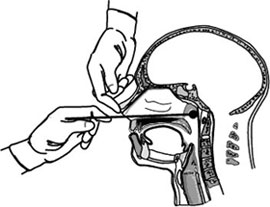Sometimes classmates- even ones from long ago- can come to the rescue.
That’s what Dr. Ramy Arnaout of Beth Israel Deaconess Hospital (Boston) found, when he reached his pals at MIT. Thankfully, MIT has been deeply involved in what they call the Manus Project- promoting 3D and other rapid manufacturing techniques.
Since neither Copan (a Chinese firm) nor Puritan (a Maine firm) are able to keep up with the demand for nasopharyngeal swabs, Arnaout’s hospital was left short. But, MIT delivered. 22 days after that phone call, the first (of four) NP swab prototypes were being tested clinically. And, hundreds of thousands are being produced via 3D printing- and that number will cross the million threshold any moment, thanks to EnvisionTec, a provider of 3D printers (Dearborn, MI), which has recalled its previously laid off labor force. (Note that the FDA has no specific approval process for NP swabs, but to obtain a federal contract, the FDA must grant a design emergency use authorization.)
The swabs, 15 cm in length, 3 mm wide, nylon-based, are coated with flock that collects the virus particles from the subjects upper respiratory system. Since this is inserted into one’s head, it must be long and flexible enough to maneuver through the nostrils- but stiff enough to be twirled around and obtain the sample.

Carbon, another maker of 3-D printers, has teamed up with Resolution Medical, a Minneapolis-based maker of medical devices, to produce NP swabs. Having multiple suppliers is critical- since there is no one failure point that can create logistical havoc. As we have seen throughout this pandemic.
As is Origin, which actually develops the software the 3D Printers use. They had also laid off their staff of 40, but now they adapt snorkeling masks and filters for use as PPE, as well as producing the NP swabs. (Origin has just qualified as a medical device manufacturer, and also will produce a million swabs a week.)
But, it’s not just swabs. Formlabs, another 3D printer manufacturer, in concert with Northwell Health (the largest private health-care provider in NY with 23 hospitals and 800 outpatient units) has modified CPAP (constant positive airway devices, normally used for sleep apnea sufferers) to serve as emergency ventilators.
MIT is also using its 3D Printers to provide face masks for health care workers.
And, in the DC area, a bunch of high school kids (who are out of school due to the pandemic) have created the Print to Protect group. These kids have 95 printers which are ushering out some 3000 face masks for those more at risk- such as the homeless and those clinics and hospitals declaring dire shortages.
Looks like 3D printing will get the same push for acceptance as has telemedicine, thanks to this pandemic.











I believe there is some 3D printing of face shields in this area (upstate New York). I had also heard about the work with CPAPs. One of those converted CPAPs was actually considered (and rejected) for use with my brother in law in the early days of his hospitalization, possibly due to a preexisting condition he had. I wasn’t aware of printing swabs. It will be most interesting to see what technologies come to the forefront due to this pandemic.
Alana recently posted..Zig Zag Zoo #AtoZChallenge
The CPAP conversion ranges from upping the airflow to converting the device to become a ventilator. It’s the execution and the design that sets the limits. I hope your brother-in-law has experienced a complete recovery.
I have read so many such stories of people coming together to use technology – 3d printers included – to help during this time..
It is certainly heartening to note..
vidya recently posted..Z is for Zest
Yes, it is, indeed, Vidya! Thanks for making that point.
It’s amazing to me as to how. 3D printer can do all that. Amazing!
From jetliner parts to NASA demands to artificial organs to artificial limbs- and now to swabs and face masks. A wide range, indeed, Martha.
Who could ever imagine that 3D printing could have such incredible ramifications for our health and for so much more!
Alice Gerard recently posted..Life in these strange times: Yertel the turtle and other tales
I’ve reported in the past that whole parts for sophisticated jetliners are now produced by 3D printing, Alice. But, what makes this need perfect for 3D printing is that the startup time and machine setup is virtually zero. Once a design has been approved, then repetitive production can proceed forthwith.
My limited experience with 3D printers is that they are slow. Although great for prototype printing, they are not so great for production runs. However, if it is the only to you have, by all means, use it.
I think you are considering the 3D Printers that are very small. I would put them akin to the $59 laser printers that exist. They, too, are small and slow. Once one begins to examine the laser printers that cost about $ 1000 or more, their capabilities are greatly expanded.
But, I agree with you, Doug. Those small printers could be used to make swabs- probably 50 to 100 a day. But, when it comes to a face mask, they’d probably only make 1 or 2.